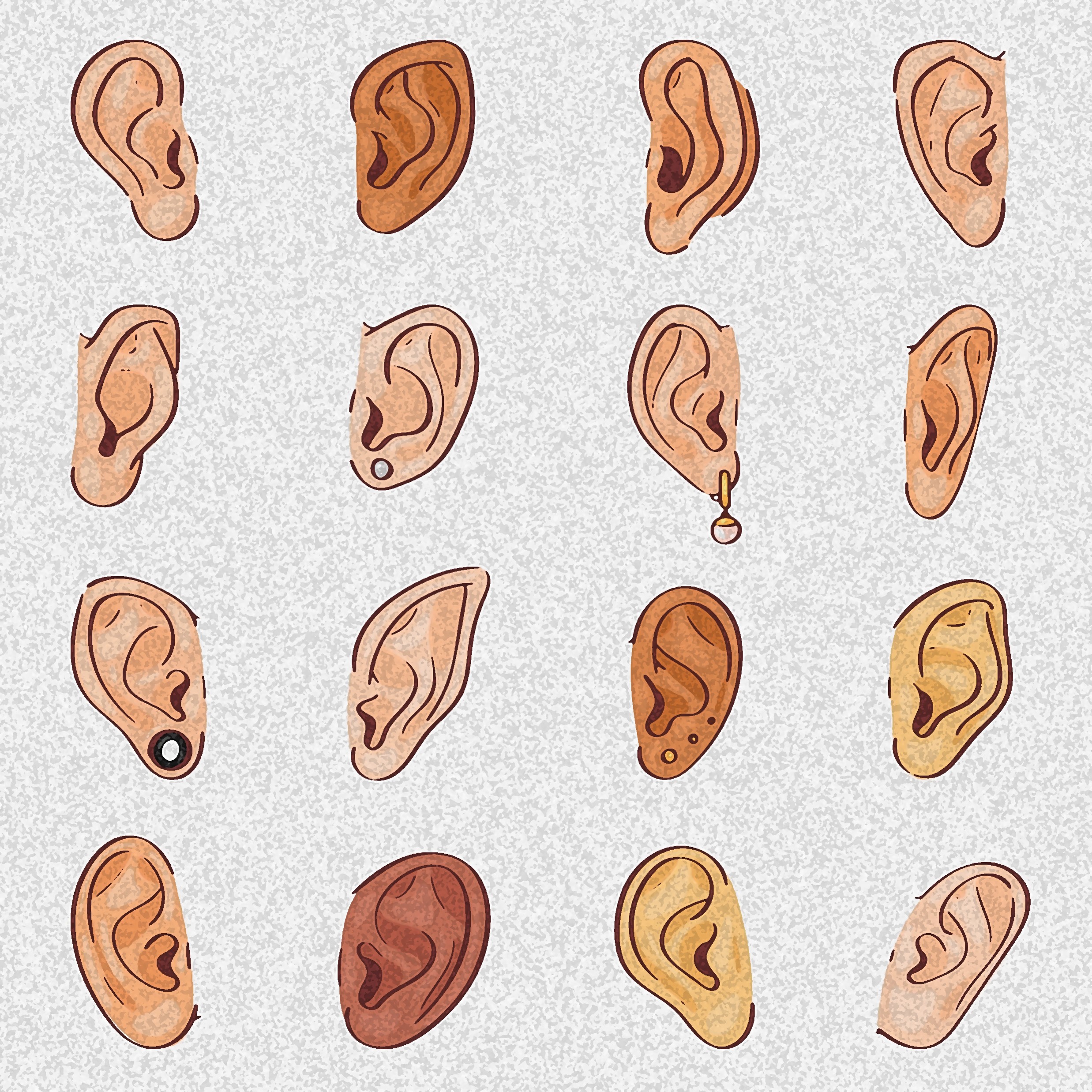
For some businesses – and lots of radio stations – January has the reputation for being a slow month.
Alas, not for Jacobs Media. Last week we not only made the trek to Vegas for CES, but launched Techsurvey 2023 during the same week. A cliché, perhaps, but a company is only as good as its team. And in my case, that’s the truth. To keep both of those “plates” spinning at the same time, it requires a dedicated, driven group of people who know how to do their jobs, especially during the first week after the holidays.
January feels a lot like “Connect the Dots” month with lots of data coming at us, especially on the technology front. Our job is to read the room, and analyze what truly appears to be happening at both CES and among the responses from tens of thousands of core radio listeners. CES 2023 is now in the history book, but we’ll be giving you a virtual walk around the Las Vegas Convention Center in a free webinar next week. (Details here.)
And before we know it, we’ll have lots of numbers to make sense of, as more than 400 stations provide us a look at what their audience is doing when they’re not listening to the radio. I get to take sneak peeks at our Techsurveys as the numbers roll in. At a certain point in the data gathering process, you get a sense for what the study will show when “all precincts are reporting.”
So, without spilling the virtual beans, let me pull back the curtain a bit on the data trends, and how they square with what we witnessed firsthand at CES.
The trends are not only clear, but they’ve been taking shape for some time now. Audio is the stock and trade of what we have long crafted and marketed in the radio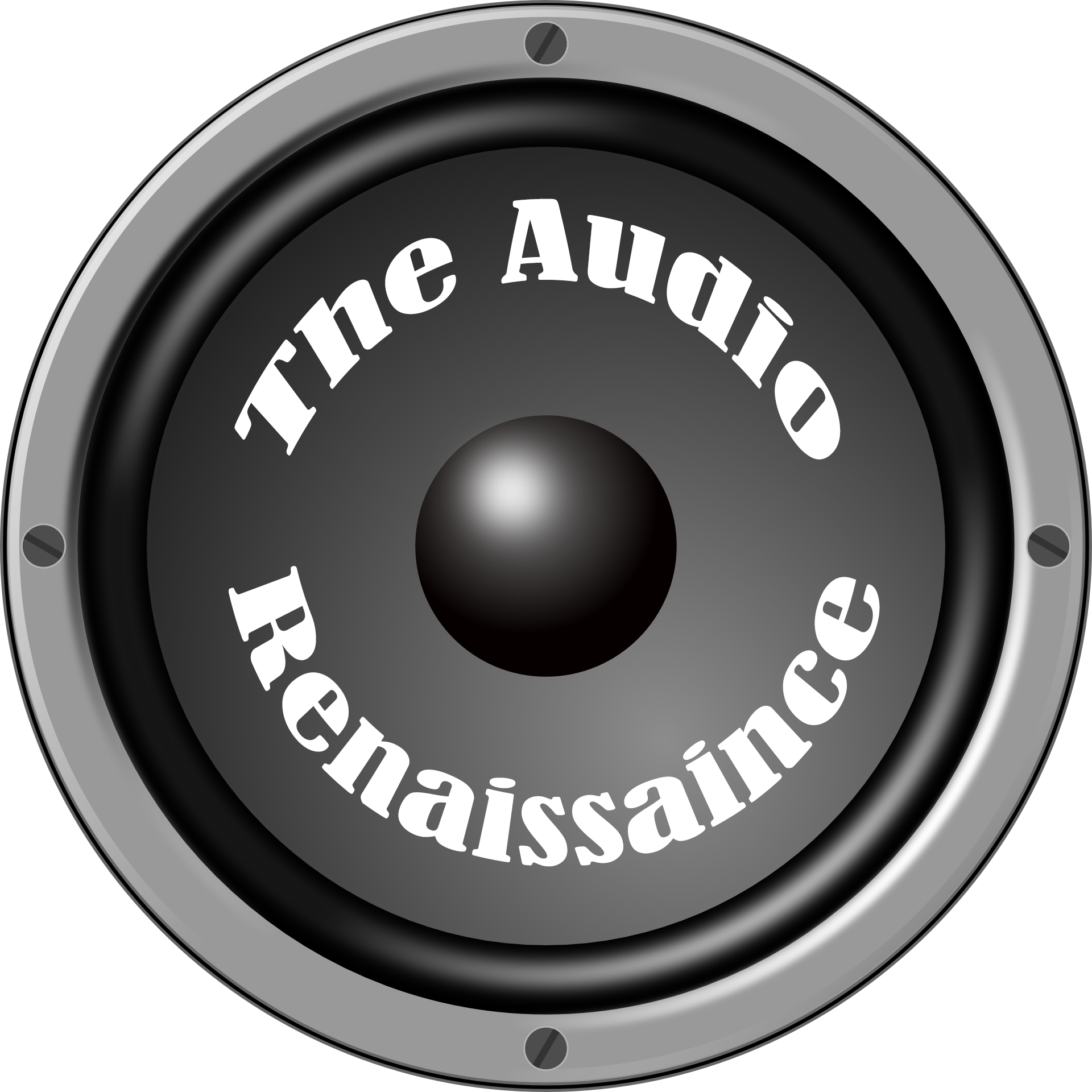 business. And in the past decade or so, we’ve experienced something of an “Audio Renaissance,” powered in no small part by the confluence of streaming music platforms, podcasts, smart speakers, audio signatures, Bluetooth speaker systems like Sonos, and of course, satellite radio.
business. And in the past decade or so, we’ve experienced something of an “Audio Renaissance,” powered in no small part by the confluence of streaming music platforms, podcasts, smart speakers, audio signatures, Bluetooth speaker systems like Sonos, and of course, satellite radio.
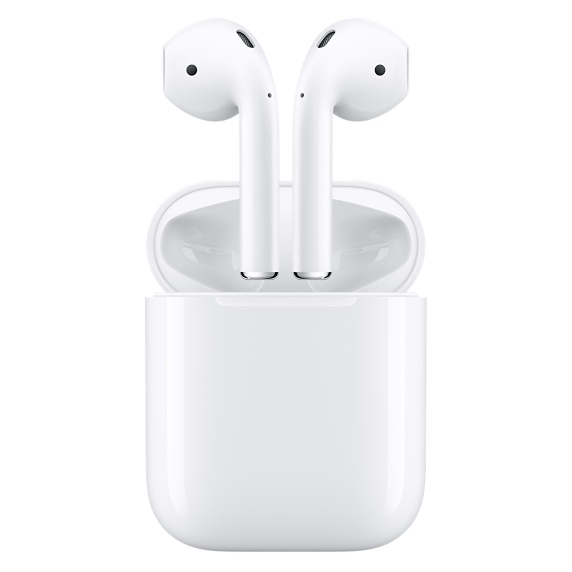 Amidst all this audio, we’ve seen an explosion in the sales and usage of “hearables” – devices like AirPods and wireless headphones, making it seamless to make sure our everyday routine activities have an audio soundtrack.
Amidst all this audio, we’ve seen an explosion in the sales and usage of “hearables” – devices like AirPods and wireless headphones, making it seamless to make sure our everyday routine activities have an audio soundtrack.
But the opportunities and demands on broadcast radio’s content creators and marketing experts have become broader – working their way into other media verticals and portals. Yes, audio has been red hot these past few years, but not at then expense of video. It can be argued that media that were once considered “audio only” have now added visual components at just about every turn.
We have long talked about how radio (or podcasting or streaming) is a “battle for ears.” But “eyeballs” are very much a part of the attention economy. And as Paul reminds radio sellers and marketers every chance he gets, “You’re not in the radio business anymore.”
For many – both in the programming and sales departments – that can be a bitter pill to swallow. It requires additional talent as well as resources. But the potential is there to win over new customers, satisfy the current audience, while adding revenue at the same time.
But it’s not just a smart idea to start thinking more visually – in many ways, it’s an imperative to keep up with the other plays in the media entertainment and information space.
Consider the car, one of the major attractions at CES 2023. The new West Hall has become the home of mobility – specifically cars, trucks, tractors, boats, and even cars that fly. And everywhere you look inside many of these vehicles, you see two trends:
Bigger screens and more screens.
CTA’s Steve Koenig calls it “screenification” and we saw it live and in person at CES. Massive “pillar to pillar” screens facing the front seats of the cabins are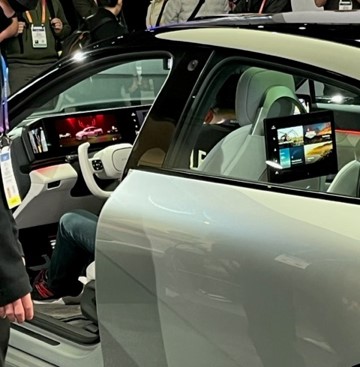 becoming more and more common, providing a more striking visual appearance for both the driver and the person “riding shotgun.” And in the back, passengers now have their own personal screens serving up games, movies, TV shows, the news, documentaries, and anything visual.
becoming more and more common, providing a more striking visual appearance for both the driver and the person “riding shotgun.” And in the back, passengers now have their own personal screens serving up games, movies, TV shows, the news, documentaries, and anything visual.
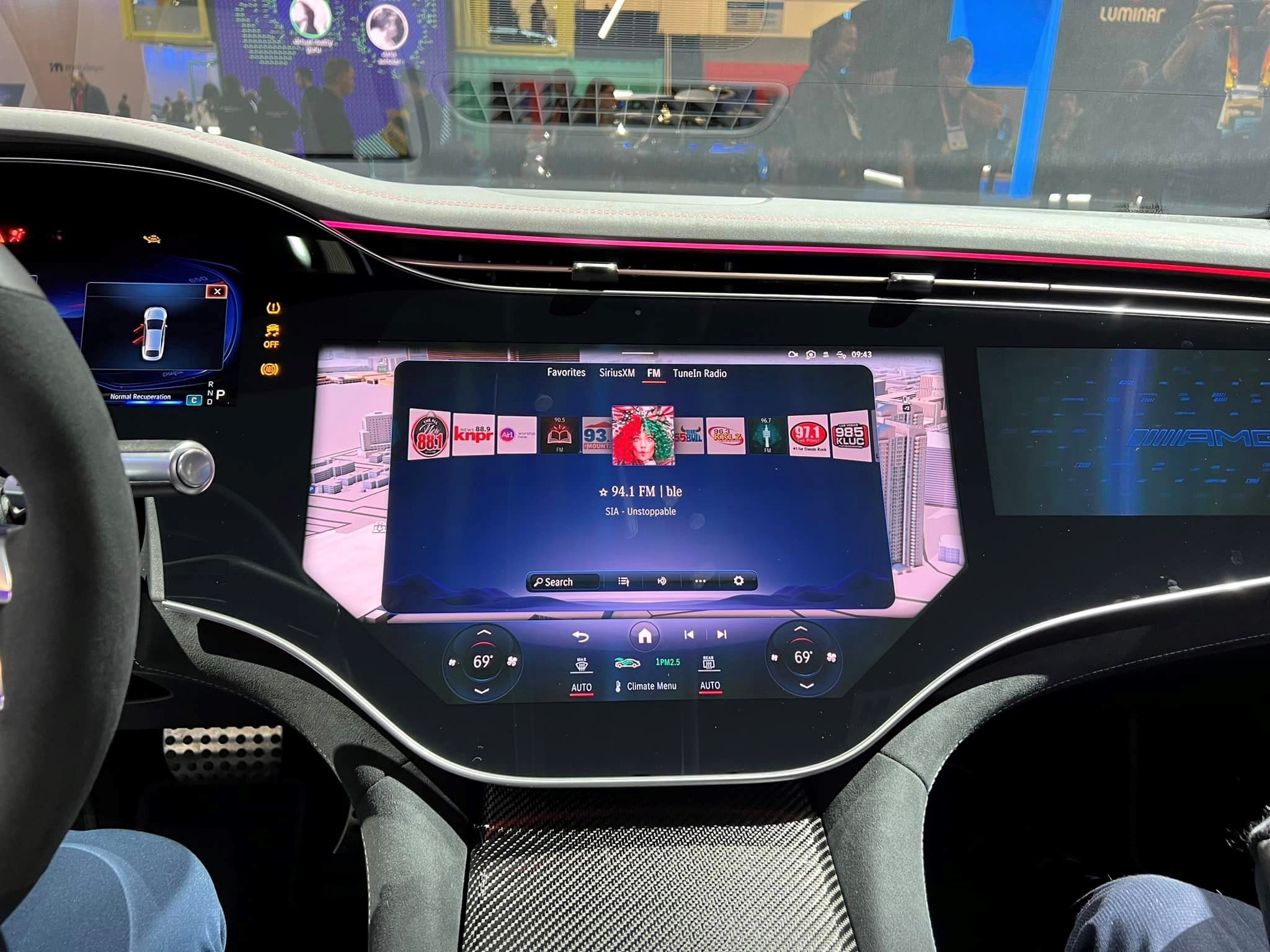 Xperi was one of our tour stops this year, giving our guests a chance to see the DTS AutoStage platform, an interface where the entire local radio market is arrayed carousel-like in the dashboard’s center stack. It’s a piece of beauty, and radio has never looked better in cars. But for the vast majority of vehicles on the road with artist and title displays, looking good in the car has never been more important in the quest to keep up with the audio Joneses – Spotify, SiriusXM, and even personal music collections.
Xperi was one of our tour stops this year, giving our guests a chance to see the DTS AutoStage platform, an interface where the entire local radio market is arrayed carousel-like in the dashboard’s center stack. It’s a piece of beauty, and radio has never looked better in cars. But for the vast majority of vehicles on the road with artist and title displays, looking good in the car has never been more important in the quest to keep up with the audio Joneses – Spotify, SiriusXM, and even personal music collections.
What kind of video can your station develop that gives car passengers (and everybody else in the audience) the chance to enjoy the visual version of your radio station? If your brand has personalities that matter, you’re a step ahead, especially if they have the sensibilities to develop a “look,” and the talent required to have a commanding video presence.
Two stations I have the good fortune to work with have airstaffs the fit the bill, especially superstar talent in morning drive. Beasley’s WMMR/Philadelphia and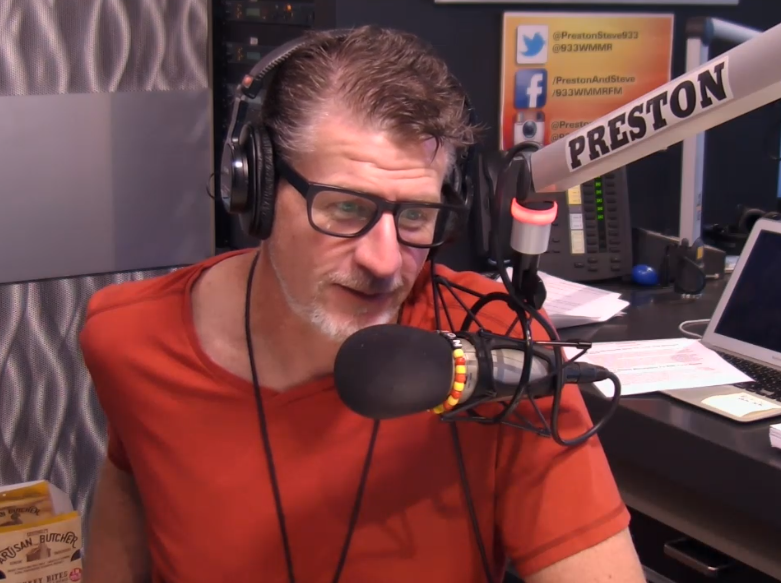 WRIF here in Detroit have led the way in VP – video presence – for years now. And it has paid off both in tangible revenue and in brand development and building. Each station is equipped with cameras and switching equipment, and a team to that produces a daily video feature focused on the best bit or moment of the morning.
WRIF here in Detroit have led the way in VP – video presence – for years now. And it has paid off both in tangible revenue and in brand development and building. Each station is equipped with cameras and switching equipment, and a team to that produces a daily video feature focused on the best bit or moment of the morning.
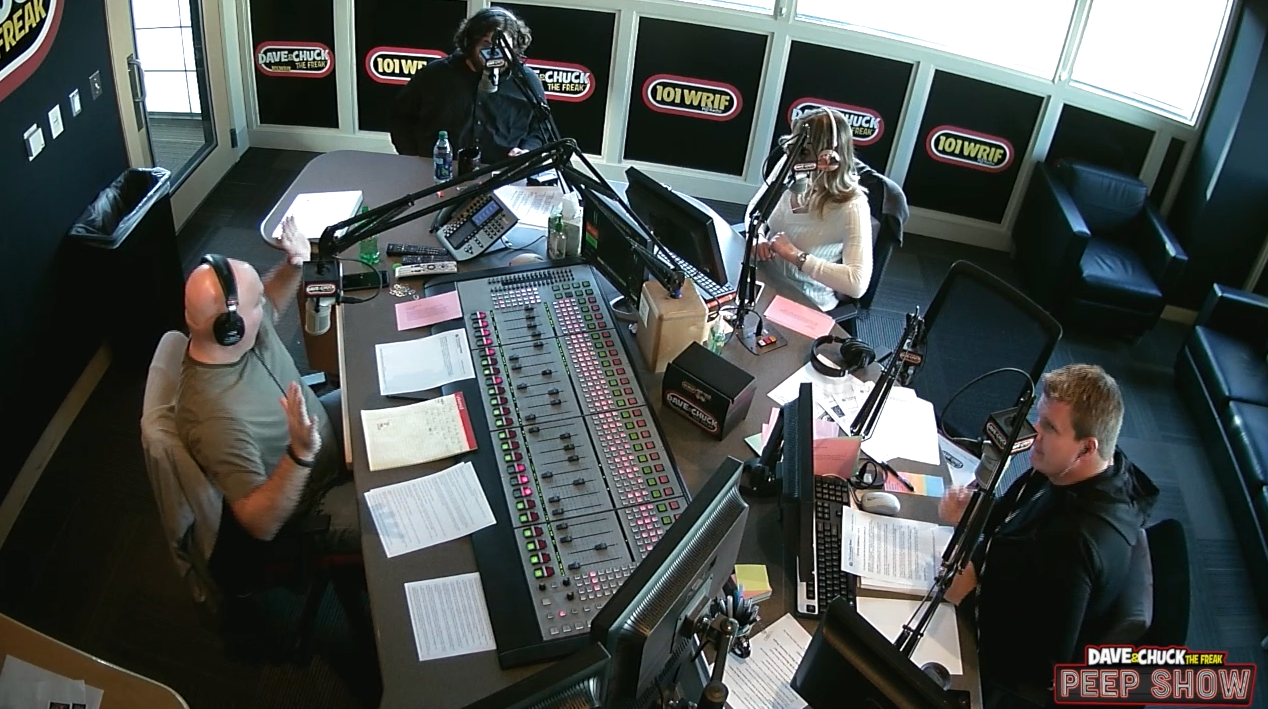 Unlike audio, video is more easily shared in email and fits in perfectly on social media platforms where great video is the creative fuel that keeps these platforms. In Philly, it’s the Preston & Steve Show’s “Daily Rush,” and in the Motor City, Dave & Chuck the Freak’s “Peep Show.” Both features are entertaining, bite-sized, visual, and provide a window into the world of the two most popular morning shows in their respective towns.
Unlike audio, video is more easily shared in email and fits in perfectly on social media platforms where great video is the creative fuel that keeps these platforms. In Philly, it’s the Preston & Steve Show’s “Daily Rush,” and in the Motor City, Dave & Chuck the Freak’s “Peep Show.” Both features are entertaining, bite-sized, visual, and provide a window into the world of the two most popular morning shows in their respective towns.
Why not expand the content, and provide entire videos streaming morning shows, similar to what MSNBC did with Don Imus back in the 90’s? Do fans care? Would they watch? How can music and commercials be integrated into the video versions of these shows? The devil is always in the details, but the opportunity is to give fans another way to enjoy a show’s content, while building its brand strength and differentiation.
This one of the new concepts we’re testing in Techsurvey 2023, so we’ll have data soon. And you know, I’ll be looking at the stations with the biggest personality shows with great interest.
We’re seeing the same phenomenon play out with podcasts, once an audio-only medium that is expanding into video more quickly than broadcast radio.
Earlier this week, Morning Consult’s Saleah Blancaflor and Mark J. Burns wrote a story whose title says it all:
“Podcasters First Wanted Your Ears. Now they Want Your Eyes, Too.”
The data show that nearly one-third (32%) of U.S. adults say they prefer video podcasts to their audio-only versions.
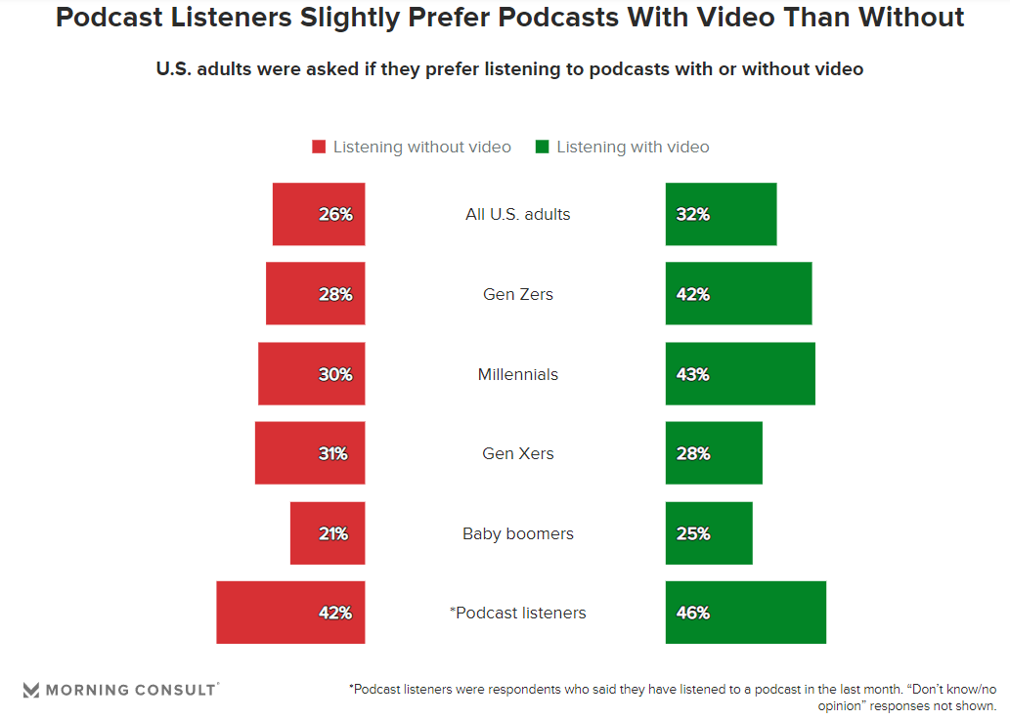
The biggest fans of the concept? Gen Z’s, Millennials, and those who listen to podcasts monthly or more. Yes, there are many podcast purists – those who will always opt to listen to audio podcasts, compatible with routine activities like mowing the lawn, washing the dishes, or walking the dog. But for larger groups of consumers – and especially podcast fans – there’s a call for video.
We’re seeing the same thing in our Techsurveys, especially the Public Radio Techsurvey, the study that contains the most avid podcast listeners. And overall, more than one-third of those who are regular podcast listeners are either watching the video versions of podcasts now, or have an interest in doing so.

And the last piece of evidence is on the social media side of the content street. TikTok totally disrupted incumbents like Facebook, Instagram, Twitter, and Snapchat with its short, clever, and raw videos, often set to music.
In the last couple of years, TikTok’s success has forced most of the other social platforms to take their shot at creating similar fast-paced videos. And TikTok has opened the door to creating a new pipeline of stars.
Case in point, Caroline Collins, a small market TV anchor who has used her TikTok following to amass a community of more than 1.6 acolytes on TikTok. This week, she made the leap to Fox26 in Houston, one of the Fox TV Stations’ key affiliates.
That provides Collins with huge momentum that most anchors don’t have. And it proves the concept that talent at producing and starring in these mini-video stories can provide a talent pipeline to other media outlets.
Including radio.
Special thanks to JacoBLOG Eric Chase.
Register for our “Backstage at CES 2023” here.
- What To Do If Your Radio Station Goes Through A Midlife Crisis - April 25, 2025
- A 2020 Lesson?It Could All Be Gone In A Flash - April 24, 2025
- How AI Can Give Radio Personalities More…PERSONALITY - April 23, 2025




Fred, your readers, who have read my comments before, know that MY favorite morning entertainment (a missing ingredient in many radio shows) is The Bob & Tom Show, which has, on a very large scale, become a TV Show! After the program was put on WGN America a few years ago and cameras were put into their studio that did it. When the WGN run ended, they all agreed that the cameras should stay and put to good use. V.I.P. members can access any show, any time and on any device! I also tell friends that it’s available any morning free via YouTube! While the B&T Show is now more visual, it still translates very well on the radio and they bring in many guests via zoom that look great. In my opinion, that’s the mark of a truly great radio program that delivers consistent laughs and creative audio content.
Art, you are correct. Bob & Tom are ahead of this curve. Video lends itself to a show liek that’s “a cast of thousands” because fans want to see the talent and enjoy the interaction. Other morning shows could learn a lot about how Bob & Tom has become – as you call it – “a TV Show.”
While I understand the points you make, Fred, I have a couple of serious concerns about the encroachment of video onto what has been solely an audio medium (ie, radio). First, however interesting it is to see the voices you’ve in the past only heard, this undermines what has always made radio “hot”: the fact that it doesn’t demand your eyes, thus its intimacy while you’re doing something else (fill in the blank, as Marilyn Monroe famously did). Before long, presenters will begin to depend on those eyes, eroding the medium. For example, compare radio’s presentation of a ball game to that of television.
Secondly, with all the focus on how audio is presented in the car cockpit, I worry about still more distraction for drivers. Disclosure: The last ten years of my “day job” career was with the US Dept of Transportation, and our Secretary rightly inveighed against devices distracting drivers’ attention from their primary obligation–driving without hurting anyone. But anyone observing the roads, as a driver or a pedestrian, has already seen what’s happening without the benefit of my background. Automakers (and regulators) must proceed with great caution.
John, I fundamentally agree with what you say about the power of audio, as well as the threat from driver distraction. But my evolving thinking is that radio will be forced to operate on both levels – continuing to provide a quality audio product while offering video content on the side that enhances the audio experience.